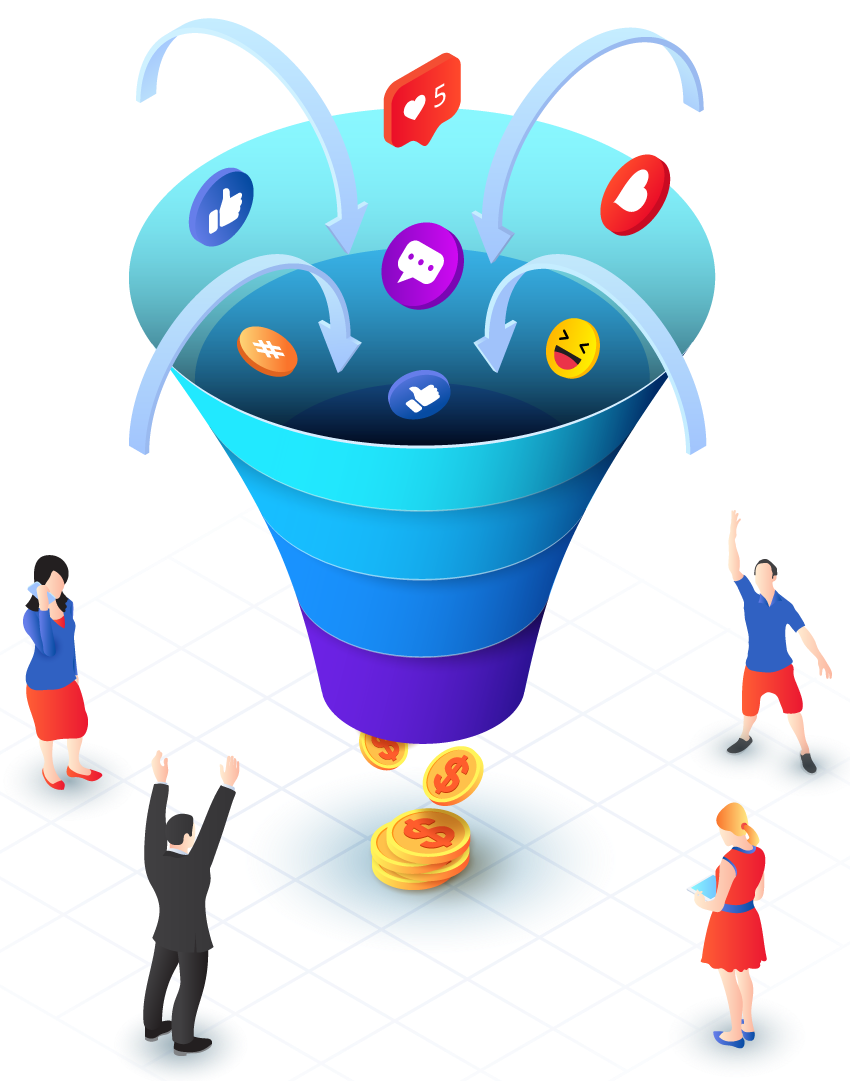Why Sales Funnels Are Key to Scaling Your Business
If you want to grow your business, you need a system in place to systematically take in and convert potential customers into paying clients. This is where sales funnels come in handy.
The process of creating a sales funnel starts with understanding your ideal client profile (ICP), or the persona that represents the group of people your products and services will most appeal to. This will help you identify where to focus your marketing efforts and determine what types of content to produce for each stage of the funnel.
At the top of your sales funnel is the awareness phase. This is populated by the largest group of people, and it includes those who aren’t ready to become prospects but have encountered your company and its offerings at some point. They may have visited your website, read your blog posts, or watched your videos. Ideally, the initial interactions you offer at this level will create enough interest to draw them slightly deeper into your funnel.
In the next section, called the consideration stage, your prospects are actively investigating your offering to determine whether it’s a good fit for their needs.
They’re looking at specific features and benefits, comparing options, and evaluating pricing and subscription packages. This is also where they might start to look at customer reviews and testimonials to further build trust and confidence in your product.
When a prospect enters the decision stage, they’re essentially ready to make a purchase. They’re weighing their options and have decided that your products or services are a good match for their specific needs. They’ve gathered enough information and have weighed the pros and cons, so they’re ready to commit.
The decision section is a great place to put in a call to action, such as a link to an online
store or a landing page that allows them to sign up for a free trial.
Once a prospect has converted to a customer, it’s important to maintain and nurture that relationship. This helps ensure they remain happy and brings in more prospects from referrals. You can do this by checking in with your new customers, sending them educational content and inviting them to webinars that can further teach them how to use your product or service.
Monitoring and tracking key metrics like your sales velocity and win rate will allow you to see how well your sales funnel is working, and to refine it as needed. Getting to know your ideal customers and their pain points, needs, goals, and aspirations will help you develop content that speaks to them specifically and effectively, and to find new ways to attract them.
For example, you might experiment with different strategies for attracting customers at the top of your sales funnel by running A/B tests to measure which ones are most effective. By testing and tracking, you can optimize each step of your sales funnel to increase conversions without having to boost your operating costs.

Free Training video
How To Transform Your Online Business with Our Universal Sales Funnel Template
My Recent Posts
All-in-One Sales Automation Platform
Check out my recent post on all-in-one sales and marketing tools and what I think of it.
Sales Funnels
Check out my recent post on sales funnels and what I think about them. Are they still worth it?

From Housekeeping to Success:
My Digital Marketing Journey
I'm Sashagay Darlington, an affiliate marketing specialist and content creator who transforms complex digital marketing concepts into actionable strategies for everyday people. Having gone from housekeeping to generating seven-figure monthly income through affiliate marketing, I now dedicate my expertise to helping serious, motivated individuals create financial freedom through proven digital marketing techniques.
sashagay darlington
©Copyright 2025 conversion31, Inc
6339 Charlotte Pike Unit #B397 Nashville, TN 37209
